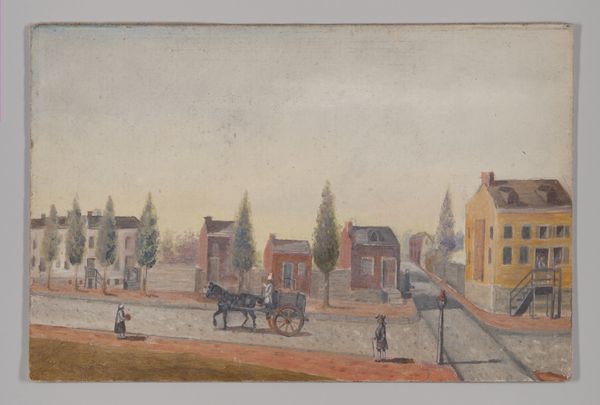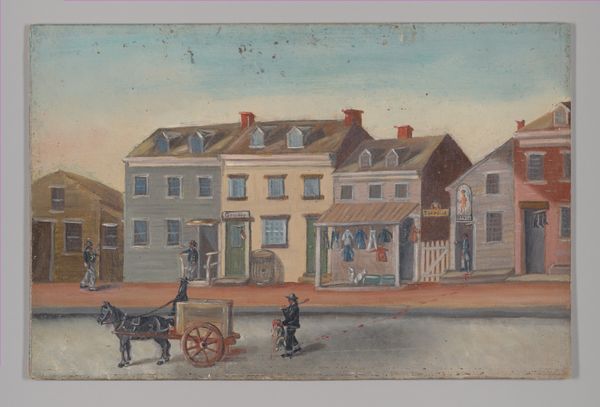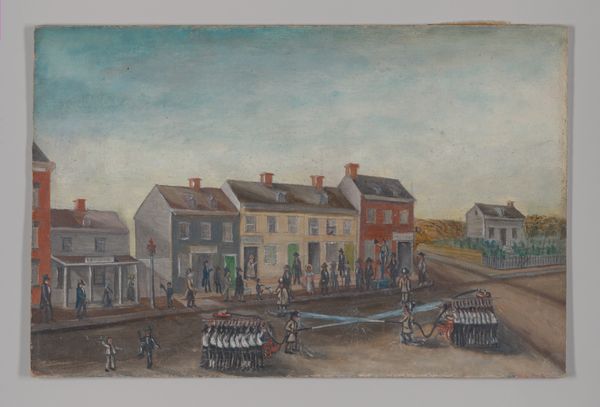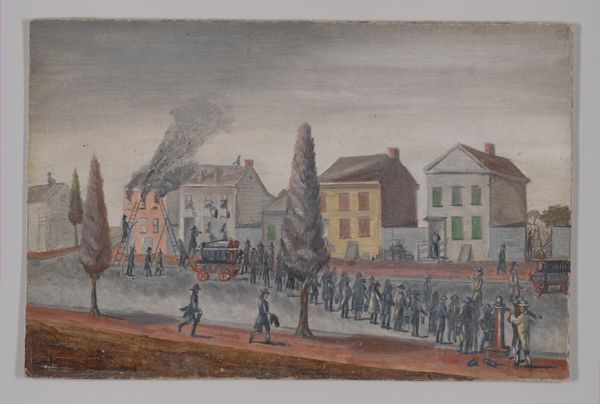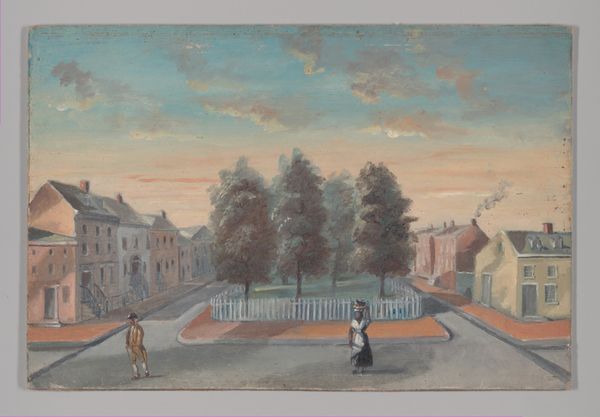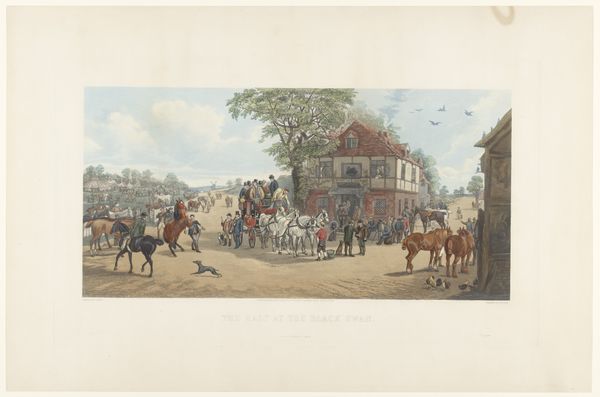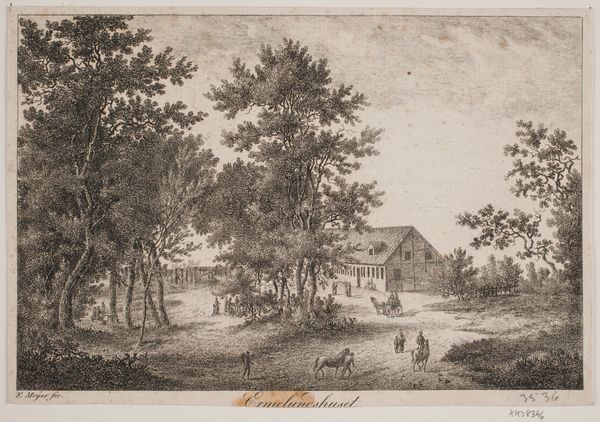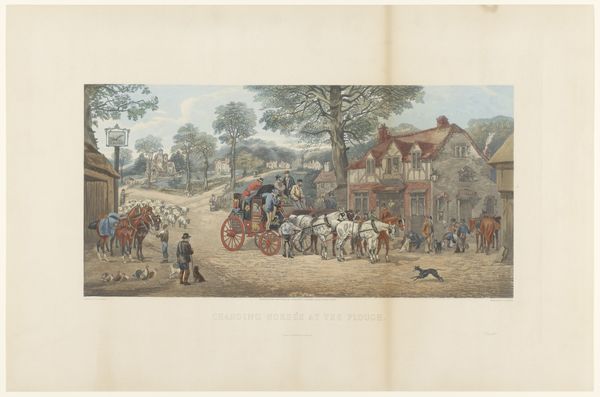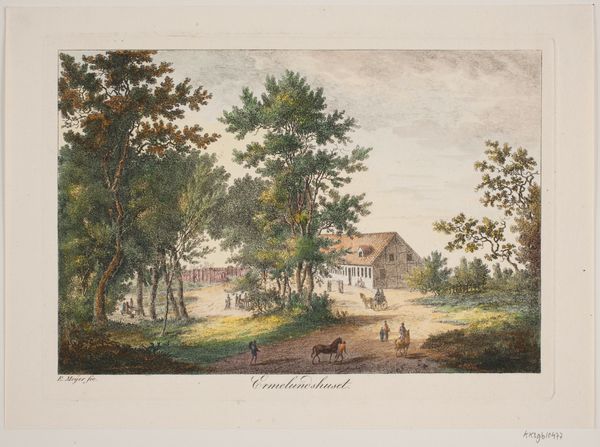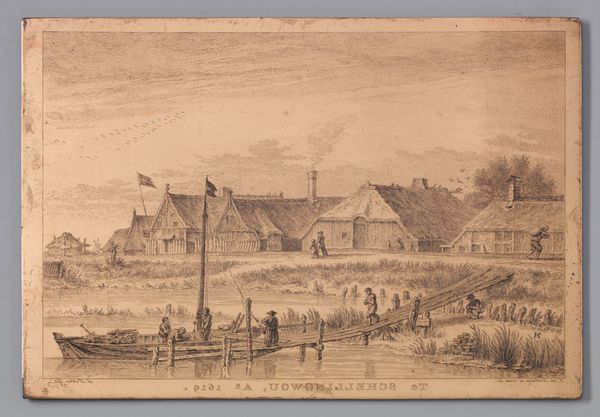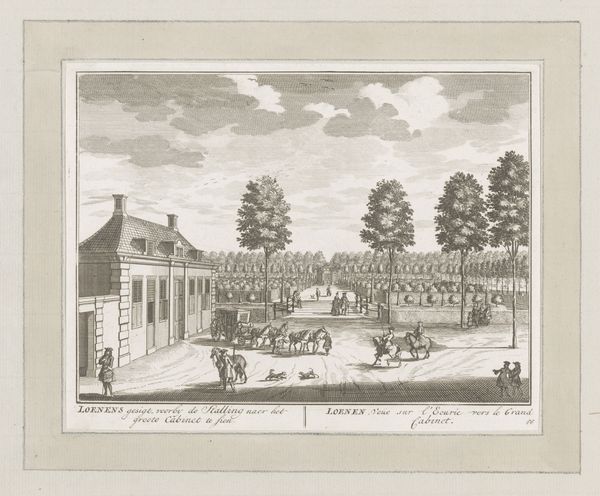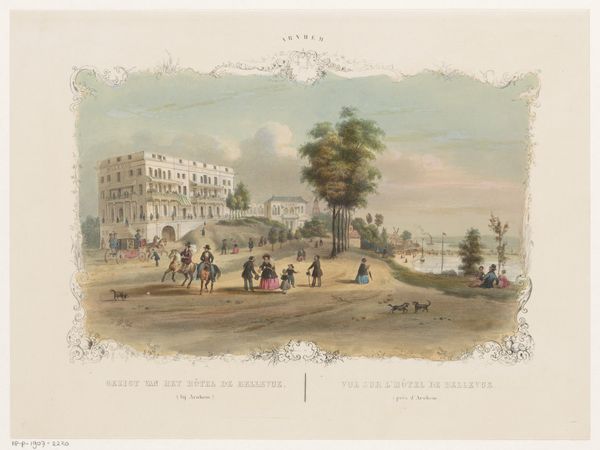
painting, oil-paint
#
narrative-art
#
painting
#
oil-paint
#
landscape
#
figuration
#
oil painting
#
cityscape
#
genre-painting
#
realism
Dimensions: 6 1/8 x 9 5/16 in. (15.6 x 23.7 cm)
Copyright: Public Domain
Curator: William P. Chappel painted "Tea Party," which dates to around 1870. It’s currently held here at the Metropolitan Museum of Art. Editor: Immediately, I'm struck by the almost dreamlike quality. There’s a softness to the light and the slightly muted colors that evokes a strong sense of nostalgia, even though I have no personal connection to this scene. Curator: I find it interesting how Chappel employs a distinctly Realist approach in capturing this genre scene, focusing intently on detail. Look at the lines of the buildings, the details in the figure’s clothing, all rendered with fidelity to their textures and forms. Consider also his engagement with spatial composition here—a linear, frontal structure articulated through repetition. Editor: Indeed, the repetitive structure highlights what seems like a formal procession of young women down the street. The uniformity in their attire certainly points towards some form of societal convention at play here. Curator: Undoubtedly. Yet Chappel contrasts the formal, regimented line of figures with more dynamic and chaotic elements, namely the boys playing along the edge of the road and the presence of street signage, imbuing a feeling of depth into the urban landscape. Editor: That tension really brings the work to life. There's a push and pull between conformity and freedom within the depicted social context, one clearly framed by social strictures and burgeoning urbanity. Are we, perhaps, observing a societal moment here—an implicit contrast between the restrictions of girlhood and the unfettered license of boyhood? Curator: That is certainly plausible, given the visual dynamic established. What resonates with me, particularly, is the subtle gradation in color across the composition; note, if you will, how the softer palette reinforces the wistful air Chappel creates here. Editor: Ultimately, what strikes me is how “Tea Party” isn't just an aesthetically rendered street scene; it’s also a document capturing specific dynamics within 19th-century American social life. Curator: Absolutely; by interweaving elements of order with spontaneity, this modest oil-paint piece yields surprising representational depth.
Comments
No comments
Be the first to comment and join the conversation on the ultimate creative platform.
